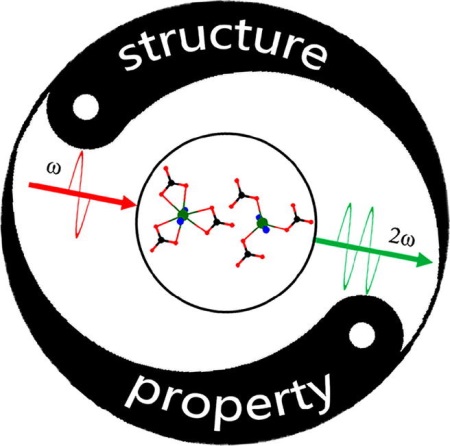It is well known that [CO3](2-) groups are one kind of most promising structural groups for nonlinear optical (NLO) materials in the ultraviolet (UV) and visible spectral region, because their it-conjugated planar triangular configuration is favorable to generate excellent optical properties. There is still no review on NLO materials with [CO3](2-) groups and the corresponding structure-property relationships. In this review, we systematically summerize NLO materials with it-conjugated [CO3](2-) triangles and attempt to demonstrate the underlying structure-property relationships between the microscopic arrangement of [CO3](2-) triangles and macroscopic optical properties. There are some interesting findings disclosed. Firstly, the cation-centered MOxF2 (M = cations of +2 or +3 oxidation numbers, x = 4, 5, 6, 8) polyhedra in carbonates play a significant role in the orientation of [CO3](2-) groups, which make the major contribution to NLO coefficients. More concretely, the different radii of M cations results in different arrangement of [CO3](2-) groups. Secondly, in contrast to the notable anionic group theory, some cations, especially the cations with stereoactive lone-pair electrons, make additional considerable contributions to the overall NLO effect. We believe that this review will shed helpful insights on the rational design and synthesis of new NLO materials of carbonates. (C) 2019 Elsevier B.V. All rights reserved.


